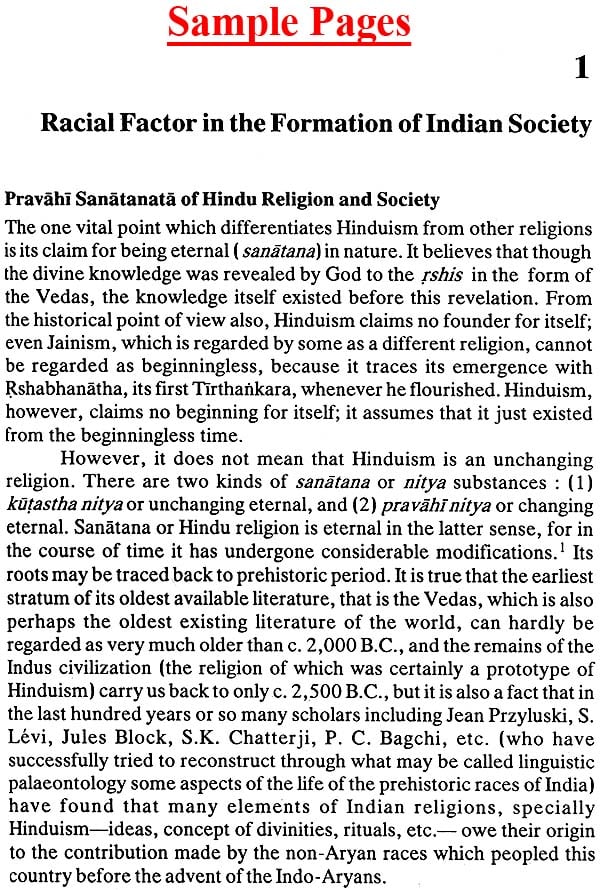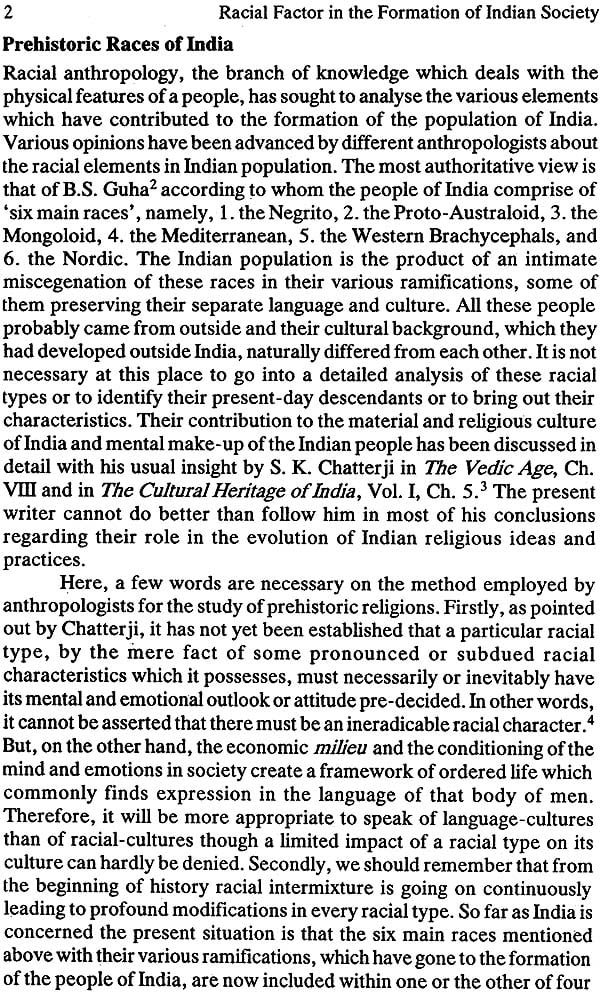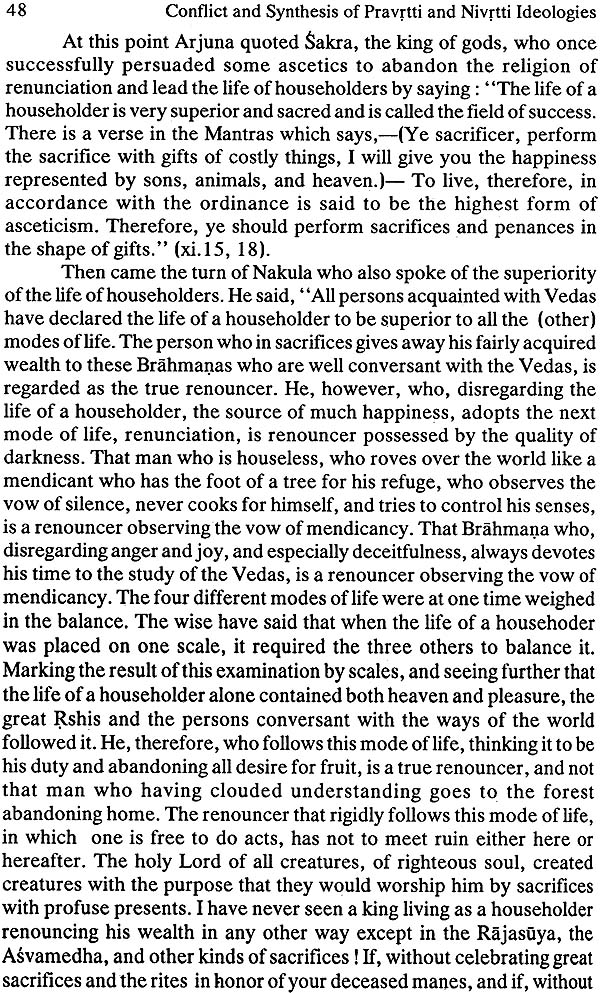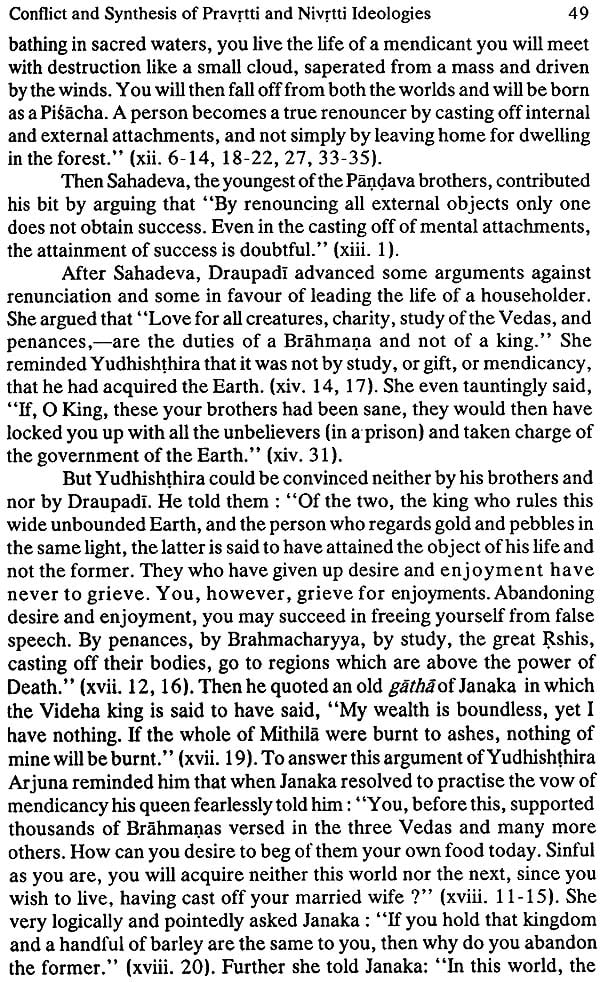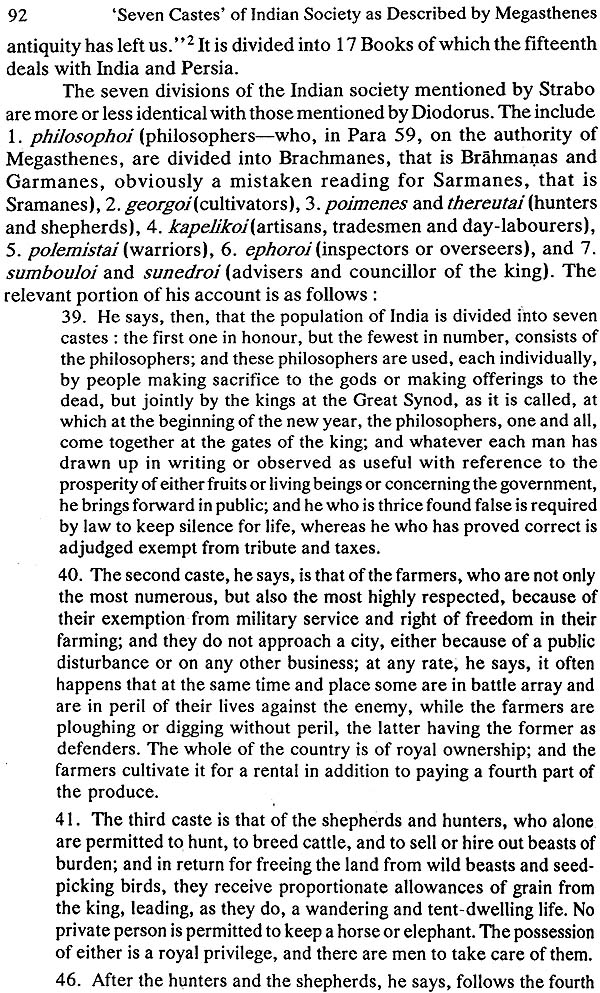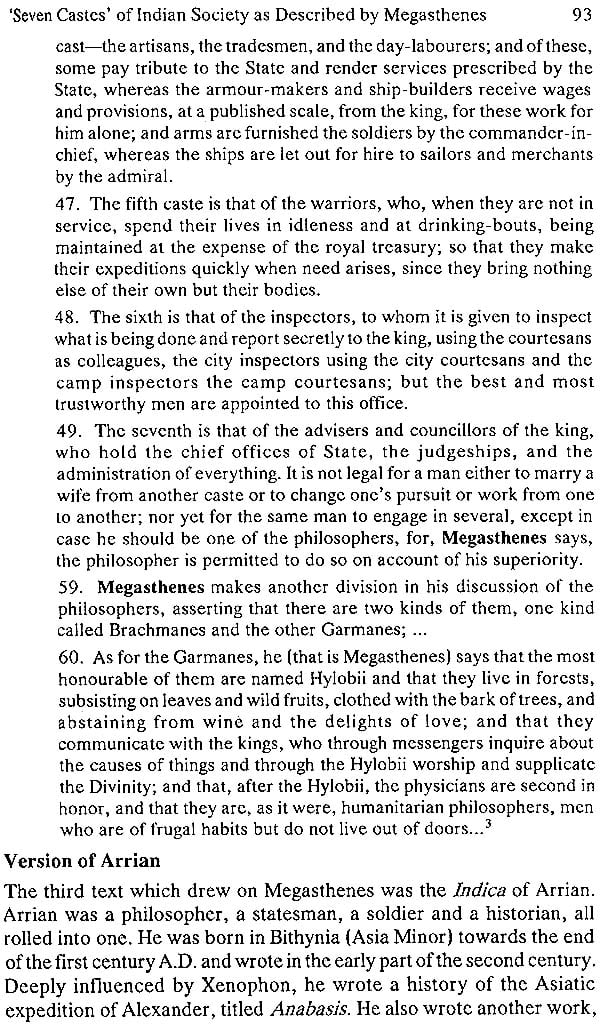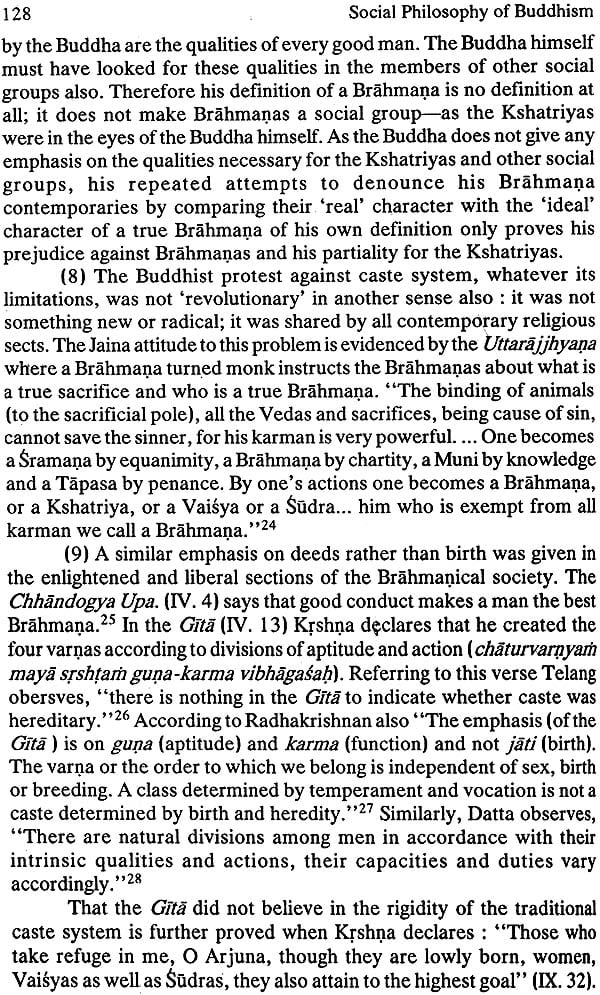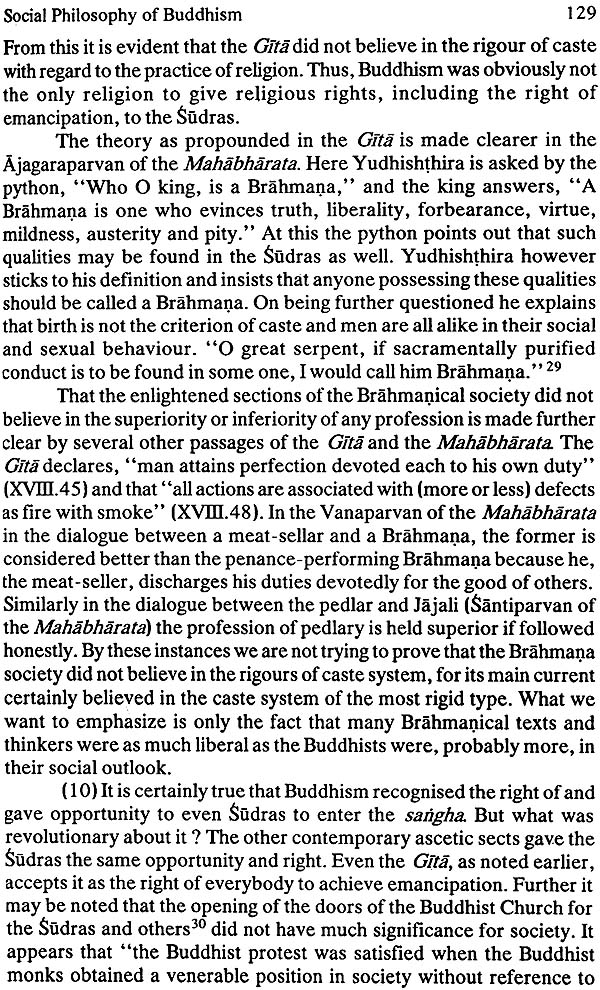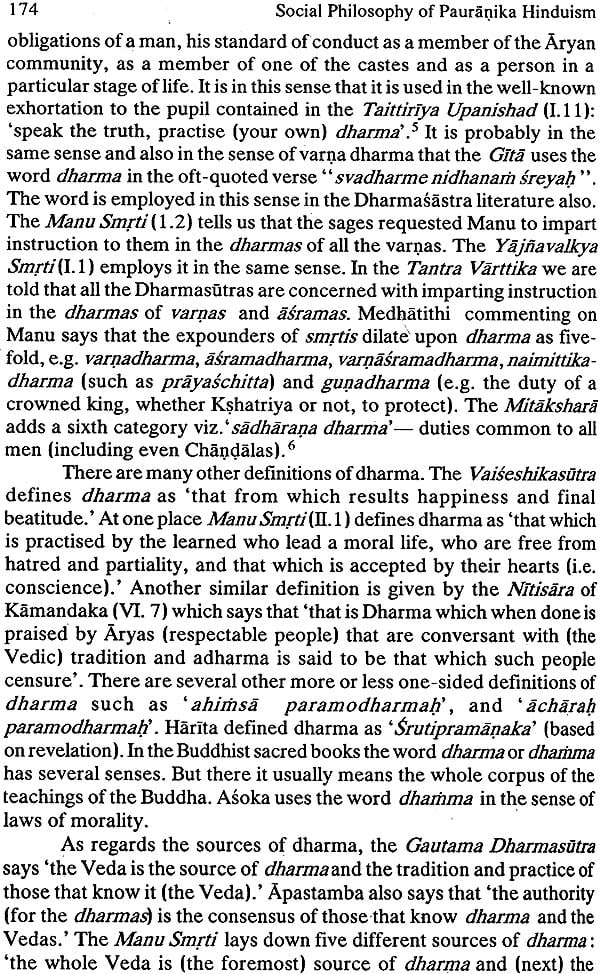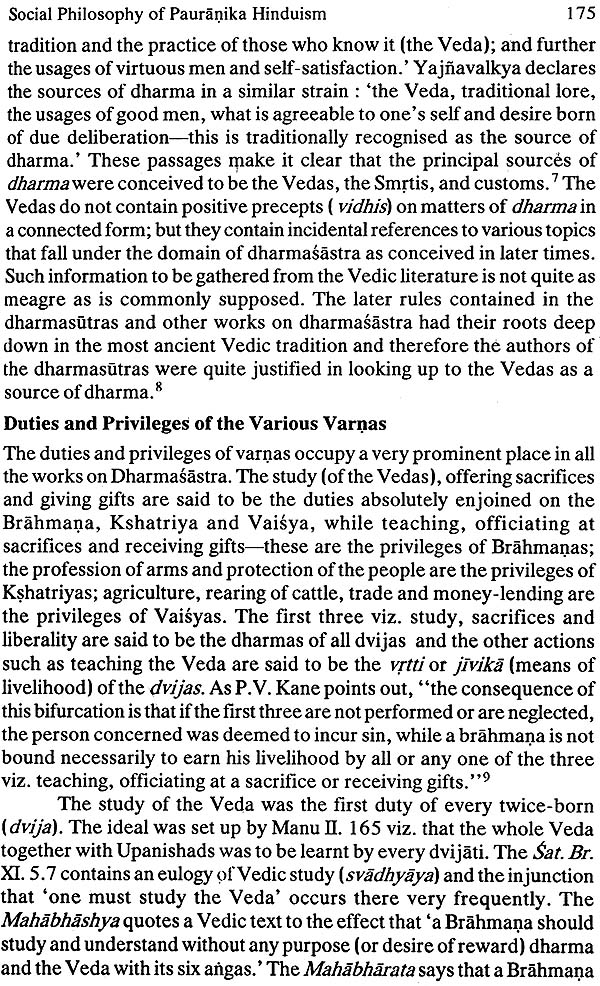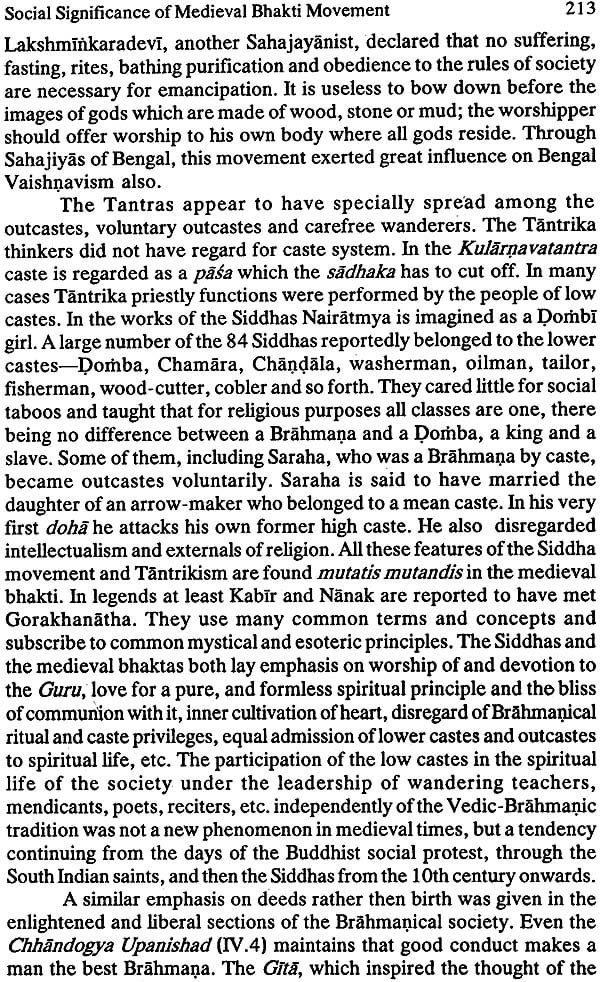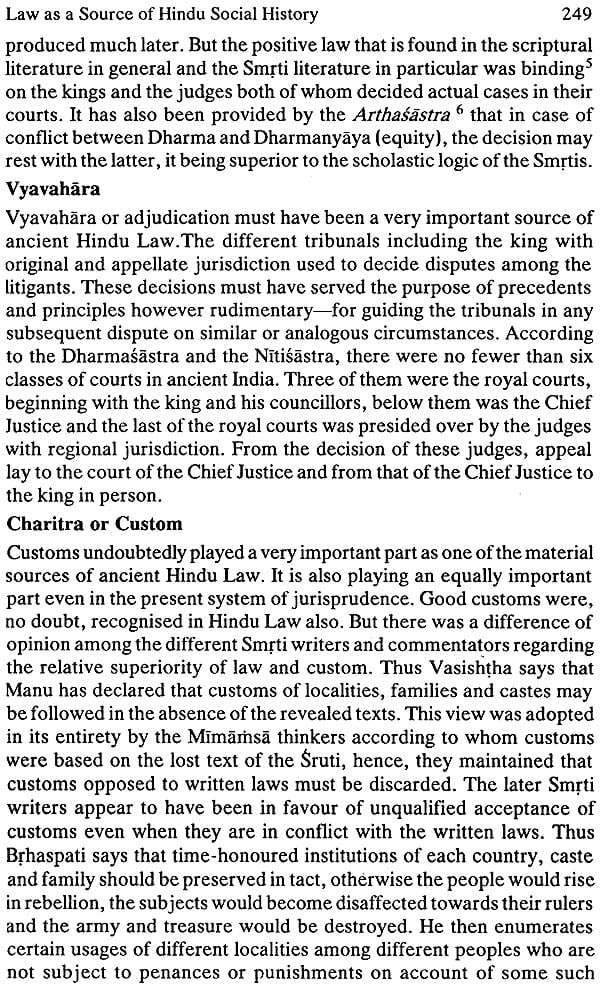
Birth and Early Growth of Indian Society
Book Specification
| Item Code: | NAK210 |
| Author: | S. R. Goyal |
| Publisher: | Kusumanjali Book World, Jodhpur |
| Language: | English |
| Edition: | 2016 |
| Pages: | 281 |
| Cover: | Hardcover |
| Other Details | 9.0 inch X 6.5 inch |
| Weight | 510 gm |
Book Description
The present work is an attempt to delineate the emergence and early evolution of Indian society. The cultural history of India goes back to pre-historic times when numerous races entered this region one after another leading to the formation of a multiracial society. Its picture had become quite clear by the beginning of the medieval period of our history. This work not only seeks to discuss the emergence of various social institutions but also throws light on such problems as the formation of social values and ideals, conflict of pravrtti and nivrtti ideals, role of Upanishads as a link between Vedic and Sramanic ideologies, etc. It throws light on the condition of various Indian social groups such as ascetics and social institutions such as slavery as seen by the Greek visitors. Social factors in the decline of Buddhism, chronology of the Dharmasastra texts, social and ideological factors in the emergence of Pauranika Hinduism, social philosophy of the Pauranika religion, Tantrika religion as a factor of social change, social significance of the medieval Bhakti movement, problems of the equality of sexes in Indian society, Manu on woman's place in society, social justice in India and the history of Hindu law as social history of the country are some of the other problems discussed herein by the author. It is hoped that it will be received enthusiastically by scholars and students of both history and sociology.
Professor S.R. Goyal is the retired Professor and Head, Department of History, J.N.V. University, Jodhpur. Described as 'one of the five best recent historians of ancient India' by Professor David N. Lorenzen, the great Mexian Orientalist, Professor Goyal combines all the qualities associated with scientific scholarship. He has authored more than forty-five voluminous works and over 170 research papers which cover so diverse fields as political history, religious history, literature, biographies, numismatics and epigraphy. He was honoured with the General President ship of the Silver Jubilee Congress of the Epigraphical Society of India held at Udupi in April, 1999 and was elected the Honorary Fellow of the Society. In 2006 he became the General President of the 90th Annual Conference of the Numismatic Society of India held at Santiniketan, West Bengal. He was also invited to be the General President of the 2006 Annual Session of the Indian History and Culture Society held at Gwalior which he could not accept because of the clash of dates.
His doctoral thesis, A History of the Imperial Guptas (1967), was acclaimed as 'the best analysis of the Gupta period which I have ever read' by Professor A.L. Basham (National Professor of Australia) and as 'imaginative', 'well-written' and 'a model of historiography' by Professor Eleanor Zelliot (Minnesota, U.S.A.). Among his other major works are included a two volume study of ancient Indian religions, a three volume study of Hinduism, three corpus-like volumes on ancient Indian inscriptions, a three volume study of ancient Indian numismatics, two volumes respectively on Kautilya and Megasthenes, a three volume study of ancient Indian history in about two thousand pages and four volumes on Great Rulers of Ancient India Series.
Professor Goyal has so far been honoured with several festschrifts, including Reappraising Gupta History for SR. Goyal (ed. Professor B. Ch. Chhabra et al) (1992), S R. Goyal: His Multidimensional Historiography (eds. Professor Jagannath Agrawal and Dr. Shankar Goyal) (1992), a four volume festschrift in about two thousand pages entitled Reconstructing Indian History for SR. Goyal (2003) and a two volume festschrift entitled Investigating Indian Society (2013).
While the manuscript of the present work Birth and Early Growth of Indian Society was being finalized and typed, its author Professor S.R. Goyal, also my esteemed papa, gradually became sick, and, later on, bedridden - he was running 84th year of his life at that time and was suffering from many old age ailments - and, eventually, passed away in the evening of 9th November, 2015, after a protracted illness of about a year. But such was his devotion to our discipline that during this long depressive period he still managed to read carefully the entire manuscript and first proofs of this book but also finalized the manuscripts of his two other books Pauraniks Sects and Cults and A Comprehensive History of Hinduism. Professor Goyal was indeed a literary genius, an institution by himself. In all he authored more than 45 voluminous works, mostly research monographs, and over 175 research papers which cover so diverse fields as political history, religious history, social history, biographies, literature, numismatics and epigraphy. The sheer volume of his writings and the wide breadth of their coverage, not to speak of their high quality and originality, have greatly amazed his contemporaries. It fills my heart with great pride when I discovered that he was described as a 'modern Ganesa' by Professor Lallanji Gopal and as "the one who has done more than the most of his age-group, next, perhaps, only to R.C. Majumdar age-group scholars" by Dr. S.P. Gupta. Similar views on him have been expressed by many others time and again.
Here I do not intend to write about the contents of the book as it has already been highlighted by Professor Goyal himself. I only wish to put on record that I had promised papa just a couple of days before his death that all his incomplete books shall be published at the earliest. In fact during his prolonged illness and the fastly deteriorating medical condition he often expressed his regret that he could not complete his ongoing projects, including the current one. I assured him that I undertake to complete it as early as possible. And I have kept my promise. The publication of this book, therefore, is a first step forward towards my undertaking. I have read the entire material twice or thrice with utmost care making some stylistic changes here and there and saw to it that the footnote numbers are mentioned at proper places in the text and full references to them are given. I have also prepared an exhaustive Bibliography and Index. The jacket covers of this monograph and other two above mentioned books were printed last year when papa was alive. Still, the credit for the successful completion of this project, whatever the degree of success, goes not to me but to His grace. His other unfinished works are also being completed fast and shall appear soon.
The present work seeks to throw light on the emergence and early evolution of Indian society. Geographically and culturally India is a vast region which includes all the countries of the Indian sub-continent. Its cultural history goes back to pre-historic times when numerous races entered this region one after another. This process resulted in the formation of a multiracial society and intermingling of various cultural elements. This is one of the basic themes of the history of Indian society which the present work seeks to delineate as much as possible chronologically upto the end of the ancient period, leaving later problems of Indian social history for another volume.
This volume is the result of constant goading by Mrs. Chitra Goyal, my putra vadhu, wife of my dear son Dr. Shankar Goyal. She is not only an ideal daughter-in-law but also a devoted wife and an ideal mother which is reflected in her deep affection for her two daughters Meghna and Akshara. I wish her a very very happy long life. The role of my elder grand daughter Meghna in the preparation of this volume is also praiseworthy, for being a student of History she rendered me academic help whenever I felt the need of it. My younger grand daughter Akshara, of course, always made my old age travails lighter by her brilliant smiles. I wish He will shower His blessings on both of them unreservedly.
| Foreword | vii | |
| Preface | ix | |
| Abbreviations | xiii | |
| Chapters | ||
| 1 | Racial Factor in the Formation of Indian Society | 1 |
| 2 | Formation of Indian Social Values and Ideals in the Vedic Age | 11 |
| 3 | Marginal Man' of the Vedic Age and the 'Frontier Nature of the Vedic Society | 27 |
| 4 | Conflict and Synthesis of Pravrtti and Nivrtti Ideologies in the Vedic Society - A Debate in the pandava Family | 43 |
| 5 | Upanishads as Link Between Vedic Social Ideology and sramanism | 55 |
| 6 | Sramanic social Protest against Vedic Orthodoxy | 64 |
| 7 | Indian Ascetics as Seen by Our Greek visitors | 75 |
| 8 | Seven Castes' of Indian Society as Described by Megasthenes | 89 |
| 9 | Brahmanas as Depicted in the Kauliya Arthasastra | 108 |
| 10 | Nature of Slavery in Ancient India: tje Greel Evodemce | 116 |
| 11 | Social Philosophy of Buddhism | 120 |
| 12 | Chronology of the smrtis and other Dharmasastra Texts and Their Importance for Social History | 143 |
| 13 | Social Factors in the Decline of Buddhism | 150 |
| 14 | Social and Ideological Factors in the Emergence of Pauranika Hinduism | 167 |
| 15 | Social Philosophy of Pauranika Hindusim | 173 |
| 16 | Tantrika Religion as a Factor of social change | 198 |
| 17 | Some Unhealthy Aspects of the Impact of Buddhism on Indian society | 202 |
| 18 | Social Significance of Medieval Bhakti Movement | 206 |
| 19 | Equality of Sexes: the Indian View | 223 |
| 20 | Manu on Woman's Place in society | 231 |
| 21 | Aspects of Social Justice in India | 239 |
| 22 | Law as a Source of Hindu social History | 244 |
| Bibliography | 252 | |
| Index | 263 |
